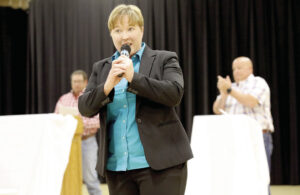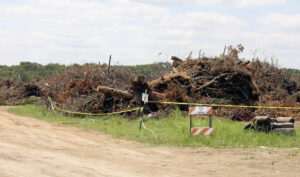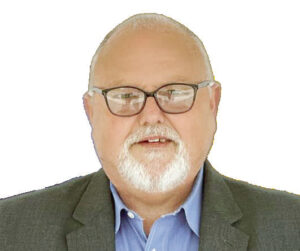There is still time for public comments to be submitted in response to the DNR’s proposed permits for the application of human biosolids from Arkansas and slaughterhouse sludge from inside and outside of Missouri to Barry County farmland.
If approved, permits proposed by the Missouri Department of Natural Resources (DNR) will initially allow the application of the waste materials to some 9,800 acres in the county. That number, however, is subject to increase. According to the proposed permits, waste-haulers Synagro Central and HydroAg Environmental will be able to add additional tracts of land to their existing permits on what appears to be a more or less as-needed basis. A public notice and prior DNR approval will not be required.
In the case of industrial meat-processing waste, the proposed permits specify that tracts of land can be added that are intended for “low-volume” application, with no annual soil analysis required.
Acreage needed for the application of biosolids from the Green Forest and Berryville, Ark., wastewater treatment plants can be added, subject to the same requirements as the land previously permitted for biosolids application.
While federal law mandates the application of biosolids, and multiple restrictions are proposed for the application of industrial sludge (including setbacks, testing schedules and agronomic application rates), the DNR discloses that the processing waste may contain PFAS.
An acronym for “Per- and polyfluoroalkyl substances,” PFAS are a group of thousands of pervasive “forever chemicals” that have been manufactured since the 1940s. They’ve since been used in multiple applications, including fire-fighting foam, non-stick coatings, stain and water repellents, food packaging, and textile and paper manufacturing. Because the chemicals are essentially waterproof and non-degradable, they have accumulated in the environment over past decades and are now negatively impacting soil and water quality and livestock and human health.
Although their presence in the environment has become almost impossible to avoid – if not altogether so – there is still much to learn about the environmental hazards they present.
After studies revealed a connection with PFAS to cancer and other metabolic ailments, the EPA now labels them as a “probable human carcinogen” and is working to regulate them.
The state of Missouri is not inclined to follow suit. This, in spite of the fact that in other areas of the country, PFAS infiltration into soil, water and livestock has reached such a high level that some farmers have been ordered to cease using their land for the production and sale of anything.
The DNR’s drafted permits for Synagro and HydroAg offer the disclaimer that “Industrial facilities may conduct activities that use, store, manufacture, transfer, and/or dispose of PFAS-containing materials.” However, no additional information about PFAS is given, other than recommendations for “good-housekeeping measures,” hoped to be of use in containing them.
According to William Wymore, of Owensville, who calls himself as an “industry insider” regarding wastewater treatment for poultry and pet food producers, PFAS content is highest in land near where human biosolids are land-applied.
“Probably because human waste contains more PFAS than animal-processing sludge does, because of the greater exposure to the chemicals that people have,” Wymore said.
The EPA does confirm that biosolids are a source of PFAS contamination. However, according to the DNR’s proposed permits for Barry County, neither Synagro nor HydroAg is required to have an Effluent Limitation Guideline (ELG), which would impose a federal pollutant limitation for PFAS and other chemicals.
In spite of the fact that contaminants could be present in the land-applied sludge, the names of the producers of said sludge (the sources of possible contamination) are not listed in the DNR’s proposed permits. In a worst-case scenario, if livestock and/ or humans were felled by pathogens or chemical exposure from the sludge, there would be no trail leading backward to the source.
Based on the language of the drafts, it’s implied that some — if not most — of the industrial waste producers will be from out of state, but no company names are given.
The only differentiation between in-state and out-of-state facilities is the frequency required for testing of their effluents.
Wastewater from facilities not permitted in Missouri shall be tested quarterly, according to the proposed permits, while wastewater from facilities permitted in Missouri will be subject to annual testing.
No mention is made in the proposed permits of a requirement for third-party testing of materials by a certified lab.
James Carter, of Neosho, says if these permits are to be approved, then third-party testing should be a requirement.
“Independent, third-party testing should be required on ten percent of all tests [that are taken] as a random spot-compliance test,” Carter said. “This will document the accuracy of the self-testing parameters proposed in these permits. If the third-party tests prove discrepancies [among] the results, then the [companies’] permits should immediately be suspended.”
Carter also has other opinions. He believes the allowable level of fecal coliform pathogens in the proposed permits is far too lenient.
“The permit allows for concentrations of fecal coliform (as an indicator of pathogens possibly dangerous to humans) of up to two million colonies per 100 ml, when our stream water is considered impaired with 130/100 ml,” he said.
Two million colonies is patently excessive, Carter says, and will contribute to the contamination of our groundwater and streams.
Carter also says the DNR is using a federal sewage-sludge guideline that doesn’t represent sludge generated at industrial facilities.
“The science used by the EPA in 40 CFR 503 [for sewage sludge] has been misappropriated by the Mo. DNR [for use with the industrial sludge],” Carter said. “Sewage sludge is treated differently from the raw industrial product described in this permit.
“This permit allows for up to 24-acre-inches of sludge applied in one year,” Carter said.
That amount, he says, is too much. “With an average rainfall of 40-inches/ year, coupled with 24-acre-inches of this pathogen-laced sludge, no agronomist would agree that 64-acre inches applied to southwest Missouri pastureland [wouldn’t result in] runoff: runoff that will damage our streams and wells.”
There are no requirements in the proposed permits for HydroAg to monitor groundwater for the water protection program, because, states the permit draft, “there are no sub-surface discharges.”
Given Barry County’s karst topography, that assertion is open to argument, with documentation from area superfund sites available to back it up.
In the fine print of HydroAg’s proposed permit for the application of biosolids in Barry County, the following sentence may hold the key to the bulls-eye the county is wearing.
“Barry County has no Clean Water Act Section 208 plan,” the proposed permit states.
The lack of such a plan appears to allow HydroAg (and other such out-of-state companies), to act as a Level 4 Authority in Missouri — with the somewhat laissez-faire freedom, it seems, to mind its own Ps and Qs — because it’s registered on the Missouri Secretary of State’s website.
The Cassville Democrat contacted Barry County commissioners and state legislators with questions regarding the implications of the county’s lack of a 208 plan. They are looking into the matter, they say.
To review the full drafts of the DNR’s proposed permits for Synagro and HydroAg, please visit the following web pages: https://dnr.mo.gov/document/ draft-missouri-state-operating-permit- mo0140449-march-15-2024 https://dnr.mo.gov/document/ draft-missouri-state-operating-permit- mo0140490-april-21-2024-0 https://dnr.mo.gov/document/ draft-missouri-state-operating-permit- mo0140244-april-21-2024-0 Comments on the proposed biosolid application permit may be submitted before 5 p.m., April 15. Comments on the proposed processing sludge application permits may be submitted to the DNR before 5 p.m., April 21.
Comments may be mailed: to Missouri Department of Natural Resources, Water Protection Program, ATTN: NPDES Operating Permits/ Permit Comments, PO Box 176, Jefferson City, MO 65102-Comments may be emailed to: publicnoticenpdes@ dnr.mo.gov. Please reference permit numbers on all comments.







